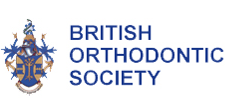
The word orthodontics means "to straighten teeth" and it is a type of dental treatment that aims to improve the appearance, position and function of teeth that are crooked or badly positioned.
Most parents want the best for their child: straight teeth, properly sized jaws, a good profile and a broad, beautiful, beaming smile. It is important that your dentist monitors that teeth, gums, jaws and bite develop properly, and the earlier your child is checked, the more likely these situations are to be identified.
Due to advances in knowledge and techniques Dr Yasmin George is able to detect potential problems from as early as age five and early treatment may prevent more serious problems from developing, or make future treatment less complicated and less lengthy.
In many cases the best results are obtained between the ages of seven and thirteen while the child is still growing; indeed some results may not be achievable once facial growth has finished. Why your child should get an orthodontic check up at age 7.
If you are unhappy or concerned about your child's dental development and you are being advised that at age 6 or older, no treatment is possible then it is worth getting advice from Yasmin at Confident Smiles.
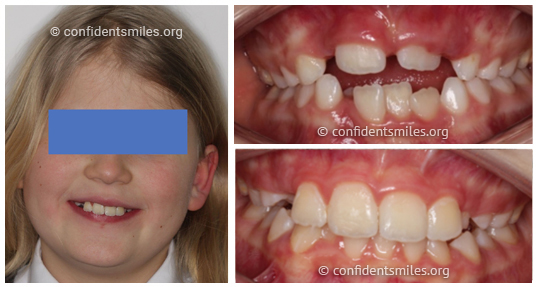
Pt WC was delighted when her arch widening treatment helped her upper front teeth to erupt. She had an expansion appliance and partial braces, treatment lasted 16 months. Her parents were also very pleased. “Yasmin is clearly passionate in her craft. She is extremely professional but also kind and empathetic with the children she treats. She explains each stage of the treatment clearly with all the options. She is thorough, up to date in the latest best practice and someone that I would recommend."
Nichola C.
In cases where an inappropriate habit is causing the problem, unless the habit is addressed, moving the teeth back into the correct positions will be a waste of time as the habit will immediately force them out of position again. As a first step Yasmin can assess this and recommend specialists to address breathing problems, retrain tongue movements, and supply thumb- and finger-guards to prevent thumb sucking.
Once the inappropriate habit is removed, teeth can be moved gently over time into the correct positions by means of orthodontic braces and other appliances if necessary. After the active phase of tooth movement a retainer of some sort will be needed to hold the teeth in their correct positions and ensure long-term stability.
Advances in modern orthodontics have made the treatment much less likely to involve extracting teeth. In the past it was thought necessary to remove teeth to "make room" for the remaining teeth to fit side by side when newly aligned in what had been a crowded jaw. Orthodontists and dentists now understand how to widen the palate and broaden the jaw, making room for all the teeth and creating broad, natural and attractive smiles. These techniques, often referred to as Functional Jaw Orthopaedics, are of course most effective when the jaw and palate are still growing.
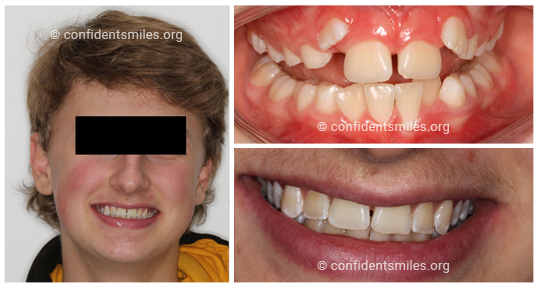
CC benefitted from some early orthodontics between the ages of 7 and 9 years to help align his upper front teeth and make space for his adult teeth to come through.
"Dr George has treated all 3 of my children regarding their orthodontic dental treatment. My son and younger daughter were both aged 7 when they started their treatment. They both required extensive treatment as they had very narrow jaws, which meant that they had no space for their adult teeth to come through. With new teeth pushing through in a variety of directions it was hard to imagine what treatment was going to be able to rectify the situation.
It was incredible how dramatic the results were within just one year of treatment.
All three children now have beautiful smiles."
Nichola C.
Recent advances can now save children and particularly teenagers the embarrassment of having to cope with metal braces on their teeth. Tooth-coloured brackets and wires can be used; or for less severe cases, clear plastic aligners such as Invisalign are available and are virtually invisible. Brackets can also be fixed on the inside surface of the teeth rather than the outside, visible surface.
The American Association of Orthodontists recommends that every child have an orthodontic examination by the age of seven. By then, the upper and lower first molars, lateral incisors and central incisors should have erupted.
Early intervention can simplify or eliminate the need for later treatment.
Mixed dentition treatment is an important subject because early treatment could not only correct the occlusion (or bite) but also may ensure normal development of the teeth and jaws.
One of the main advantages of early treatment is the majority of malocclusions can be corrected without the extraction of permanent teeth and non-surgically.
For those patients who have clear indications for early intervention, early treatment presents the opportunity to:
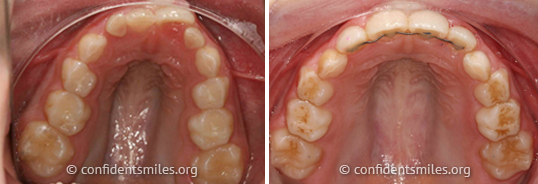
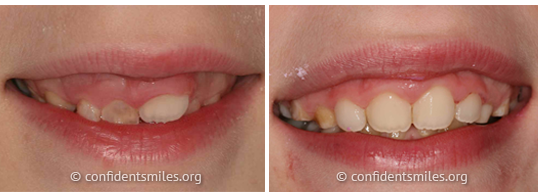
Lucas came to see Dr George age 7. Not only did he have crowded teeth and one of his front adult incisor teeth absent, but he also was a mouth breather and snored at night. A combined approach of early orthodontics with arch expansion and also the help of a good ENT surgeon, means that now Lucas's jaw is growing normally, the right teeth are through and the improved sleep and nasal breathing is benefitting him.
Phase I or interceptive treatment usually starts about age 7-9, when the child has most primary teeth and a few permanent teeth (incisors and I molars). The goal of Phase I treatment is to correct moderate or severe orthodontic problems including skeletal discrepancies, cross bites and severe crowding. Phase I treatment takes advantage of the early growth spurt and turns a difficult orthodontic problem into a more manageable one. This often helps to reduce the need for extraction or surgery and delivers better long-term stability. Most Phase I patients require a second Phase of treatment in order to achieve an ideal final bite.
Phase II treatment usually occurs after the remaining permanent teeth erupt, including second molars. This most commonly occurs at the age of 12 or 13. The goal of Phase II treatment is to achieve an ideal bite with all of the permanent teeth. Dental problems are solved with fixed appliances in the permanent dentition. The University of the Pacific's orthodontic department has conducted a research project with early orthodontic treatment. The study involved patients who received an initial Phase of treatment between the ages of 8 and 10. Patients who received Phase I early treatment had fewer visits, shorter treatment times and significantly lower orthodontic fees than those who required full-banded orthodontic treatment.

Guy had some early treatment age 8 years which meant that his adult teeth could come through into better positions, and so make any future treatment much simpler.
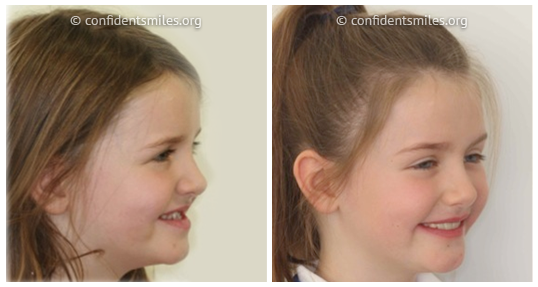
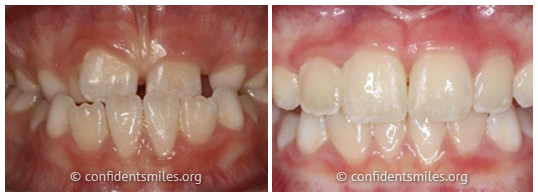
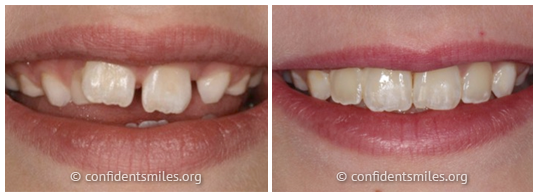
LC benefited from some 'early orthodontics' when her dentist referred her to Dr Yasmin George in 2016. After 16 months treatment both Yasmin and LC are delighted with the results. This is what her parents said…….."We are so pleased with the results of L's treatment. We hope that early intervention means that L will avoid more invasive treatments when she is a teenager. Yasmin and her team have all been extremely helpful and very friendly."